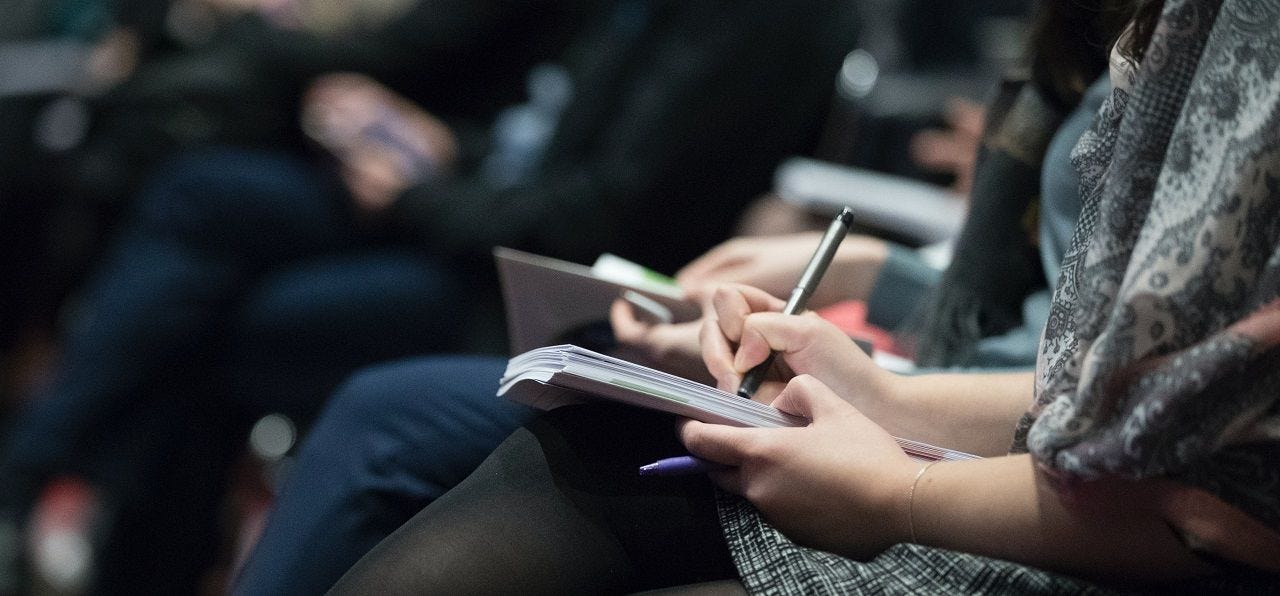The pernicious role of the “trans friend”
How just one trans-identifying individual makes it impossible for anyone in their personal and professional circles to stand up for sex-based rights
In response to last week’s issue, a reader asked an interesting question: how to prepare for the possibility that your child’s introduction to trans issues will come not from teachers, or even the internet or chat among peers, but when another child in their school “comes out” as trans? I’d like to return to this in a future issue, and I’d be keen to hear from readers who have ideas for how to handle it—or have handled it themselves. Please contribute in the comments.
If you are not a subscriber to my weekly newsletter, you might like to sign up for free updates. I hope that in the future you might consider subscribing.
In the meantime, it nudged me into thinking harder about something I’d been mulling already: the important role played by the personification of gender-identity ideology, in the form of known individuals seeking to be treated as exceptions, in the destruction of sex-based rights. I commonly receive impassioned emails from people agreeing entirely with me on everything—and then adding a PS to the effect of “but not my transwoman friend, she’s lovely, I have no problem with her using the ladies’.”
This “except some person I know” has happened in real life, too. One woman sidled up to me to express her great distress at being unable to discuss the importance of keeping single-sex spaces at work—and finished with: “But I don’t think this applies to my transwoman friend.” On another occasion, I had a friendly conversation with a well-known broadcast journalist who again agreed on pretty much everything, but repeatedly insisted that his transwoman colleague had genuinely undergone a sex change and was now female. After saying goodbye and leaving he turned around and came back to say: “I agree with everything you say except that it’s never possible to change sex. My transwoman friend did.”
Why do these people, who understand the general principle, refuse to apply it in specific instances? The obvious answer is the natural and mostly benign tendency to feel loyalty towards people we know personally, and to mentally test any policies or arguments against how it will affect them. And at least the “PS people”, as I’ve come to think of them, are willing to accept the general principle. It’s common to see people who use the desires of their “one trans friend” to argue against sex-based rights across the board.
Growing familiarity has played an important part in some past social movements. Acceptance of gay people increased over recent decades in large part because as coming out became safer more and more gay people did so, with the result that many people who had been casually or even vehemently anti-gay realised that people they knew and cared for were among this anathemised group.
In some ways, this personalisation is a good thing. Before you approve of a policy, you should think through and be willing to accept its impact on familiar, named individuals. But it also contains a trap. A policy may be good even if it will be unwelcome to people you know. It’s all too easy to lose sight of the needs of those who aren’t in front of your mind’s eye, as you fall victim to special pleading from those who are.
This risk is very familiar to journalists, who must gain the confidence of important or knowledgeable people, get the inside scoop—and then turn around and tell the world at large what they just found out. It may seem that the biggest disincentive to telling the story without fear or favour is the fear of losing the access you so painstakingly cultivated—and that certainly can happen. But there’s a more subtle disincentive, namely that it’s hard to have a friendly conversation with someone, perhaps over drinks or dinner, and then write a story that takes no more account of their feelings than those of anyone else. The drinks or dinner may have got you the story. But they also make it less likely that when it’s warranted you’ll put the boot in.
Knowing someone trans-identified creates a similar tension when it comes to thinking about sex-based policies in general. On the one hand, it’s good to observe up close what such policies mean for people who experience a strong desire to deny their sex—just as it’s good for a journalist to hear directly from a politician or business leader about the impact of, say, some change in tax rates or import controls. But in both cases, the discomfort of supporting a policy that’s unwelcome to someone you’ve got to know may lead you to ignore what ought to be your overriding consideration. In the case of the correspondent, that is to inform their audience to the best of their ability. In the case of the trans person’s acquaintance, it’s to think through what the trans person’s demand to be seen as the sex they are not means for everyone else.
Journalists and their editors are very well aware of the risk of getting captured by the big names or overarching narrative on a beat or patch. This is why lots of outlets, including The Economist, where I worked for nearly two decades, generally rotate correspondents every few years. The cost of moving people around the world and of requiring journalists to repeatedly get back up to speed is outweighed by ensuring that journalists keep a degree of detachment and avoid becoming their sources’ mouthpiece.
Two characteristics mean that a group is more likely to succeed in special pleading: that it is small, and that it is in some sense “exotic”. When a group is small, it’s easier to imagine that any side-effects of pandering to it will be too. When it is exotic, it’s easy to be distracted by that strangeness, and harder to know how to interrogate its claims. This is the position of the generalist on a newsdesk who has to turn around a story on gene-splicing or a new cryptocurrency, or of a new foreign correspondent trying to write about an unfolding coup. It’s hard even to know what questions to ask, and all too easy to parrot the claims of the first plausible “expert” who tells you what to say.
All this has been on my mind this week because I’ve been wondering how to convince media decision-makers to rethink their approach to trans issues. As anyone reading this will know, coverage of topics where prioritising gender identity over sex has harmful effects is largely terrible. And injunctions against “misgendering”—that is, referring to someone’s sex when they don’t want you to—mean that stories like “Ex-soldier exposed her penis and used wheelie bin as sex toy in public” are infuriatingly routine.
Sex Matters, the campaign group I work for when I’m not writing this newsletter, has written a media guide to try to counter the propaganda pumped out by trans lobby groups like Trans Media Watch in the UK and GLAAD in the US. But to get journalists and editors to pay attention, we have to counter those groups’ lobbying—which was remarkably effective.
In the UK, a project called “All About Trans” has been particularly noteworthy. It brings together trans people and influential journalists, and was the brainchild of Nathalie McDermott, a former journalist who founded and now runs a campaigning charity, On Road Media. Those who know about the project cite two stories, in particular, as crucial in convincing McDermott that trans people were being covered unfairly: that of David/Sonia Burgess, an immigration lawyer who died after being pushed under a train; and that of Kate Stone, an electronic engineer who was gored in the throat by a stag in a freak accident while visiting friends.
According to her Wikipedia page, McDermott was on the Tube platform when Burgess was pushed under a train by Senthooran Kanagasingham, an asylum seeker from Sri Lanka, in 2010. Burgess had worked as a lawyer under the name David, wearing men’s clothes and using male pronouns, but cross-dressed and presented as Sonia in his downtime; Kanagasingham was medically transitioning at the time, though had re-identified as a man before dying in his prison cell after being convicted of murder. Although Burgess was a well-known lawyer (and incidentally helped pave the way for the Gender Recognition Act), the coverage focused on his complex identity. Here’s a fairly typical example from the Evening Standard in 2010: “Man in dress ‘pushed’ under Tube was top lawyer called Sonia”. (Here’s a profile of Burgess in the Guardian, which is more sympathetic but still full of misgendering and other sins against today’s pieties. It’s extraordinary to think that it was written little over a decade ago.)
A couple of years after Burgess was killed, a stag ran into the garden where Stone was standing, and pierced his throat, nearly killing him. Again, the coverage focused on his trans identity, and took no account of his privacy. After he recovered, he took a case to the Press Complaints Commission—and won. Six newspapers apologised for headlines such as “Deer spears sex-swap Kate”, “Sex swap scientist in fight for life” and “Sex-swap scientist gored by stag”, and removed “inappropriate” references to his “transgender status” from their websites—that is, left the stories to stand simply referring to Stone as a woman.
I’m really sympathetic to Burgess and Stone, who were turned into tabloid fodder with no consideration for their dignity or privacy. I suppose you could argue that Burgess’s transgender status was relevant—he was well-known as David but was “dressed” as Sonia when he died, and his double life was how he met his killer, Kanagasingham, and why he had been accompanying Kanagasingham to a doctor’s appointment on the fatal day. But Stone’s transness was entirely irrelevant to what was a freak accident—the stag hardly took its victim’s sex into account. (Although one “expert” was asked on radio at the time: “Was Kate gored by a stag because she was transgender?” Ridiculous.)
I think we can all agree that journalists shouldn’t have presented these two people as freaks to gawp at. In fact without the detail of their trans identities, I doubt the news value would have been sufficient to justify publishing the stories at all.
But instead of prompting a course correction, such tabloid excesses became a justification for a far wider—and pernicious—push to deny that the sex of a trans person ever matters in journalism. And On Road Media played a major part.
Starting in 2011, the charity invited media decision-makers to sit down with trans people. Typically three trans people, four senior journalists and a facilitator from On Road Media would meet for a coffee or lunch somewhere nice, with the aim of familiarising and humanising the trans experience. The approach was remarkably effective in countering the casual cruelty of much coverage at the time—it’s much harder to use people as headline fodder after you’ve broken bread with them.
But I wonder to what extent the demands of transactivists now so familiar to us all were made at those coffees and lunches. Was it ever made clear that the central one wasn’t really an end to salacious and mean-spirited coverage, but that men should be allowed into any female-only space if they said they were women, and vice versa? In other words, did the media participants understand that they were being asked to align their coverage with a quasi-religious belief system?
And more urgently, how now to push back and seek to reinstate the importance of accuracy regarding sex in reporting on stories where sex matters? I doubt sitting journalists down with detransitioners, or women who’ve self-excluded from rape-crisis centres that admit men, or female athletes who’ve lost out to transwomen, would do much to change things. If you haven’t yet noticed that men are stronger and faster than women, or that women are the ones who get raped and men are the ones who do the raping, or that children need safeguarding, I doubt you ever will.
No, it’s not lack of familiarity with the victims of transactivism that afflicts journalism today. I think the big problem is that the “ask” of campaigner for sex-based rights is completely different. Those All About Trans sessions created a narrative about a tiny number of marginalised people that followed two familiar scripts: that of contemptuous coverage of an oppressed minority; and that of the victim of tabloids’ thirst for a sensationalist story.
These are things you can fix without anybody losing anything. But what I and other sex-realist campaigners want requires journalists to make a choice. They can give transactivists what they want by suppressing any story that touches on the harms done by self-ID, and replacing sex by gender identity right across their reporting. Or they can cover those stories properly, and inform their readers about people’s sex when sex is relevant, for example in stories about crime, sport and paediatric transition. They can’t do both.
And people who decided a decade ago that being kind to trans people cost nothing don’t want to have to choose. They want to “be kind” to everyone—and if you’re the person who says that’s not possible, why, then you’re a bitch. We see this in the framing of “trans widows” as harridans standing in the way of their husbands’, sorry wives’, self-actualisation. We see it in the way detransitioners are dismissed as fools who made the wrong choice for themselves and now want to stop “genuine trans people” from transitioning, and the way rape survivors who argue for single-sex spaces in which to recover are described as hateful bigots.
These are scarcely believable failures of empathy, and they’re all around us every day. And that’s because trans widows, detransitioners and rape survivors are saying the most unwelcome thing possible to virtue-signallers in the media and everywhere else: sometimes doing the right thing means saying No to people you would prefer not to upset; and sometimes, you can’t look good and feel good about yourself while pleasing everyone. That message will be a hard sell, but at least now I know what needs to be said.
If you were forwarded this edition of Joyce Activated, and you would like to subscribe, click below.





